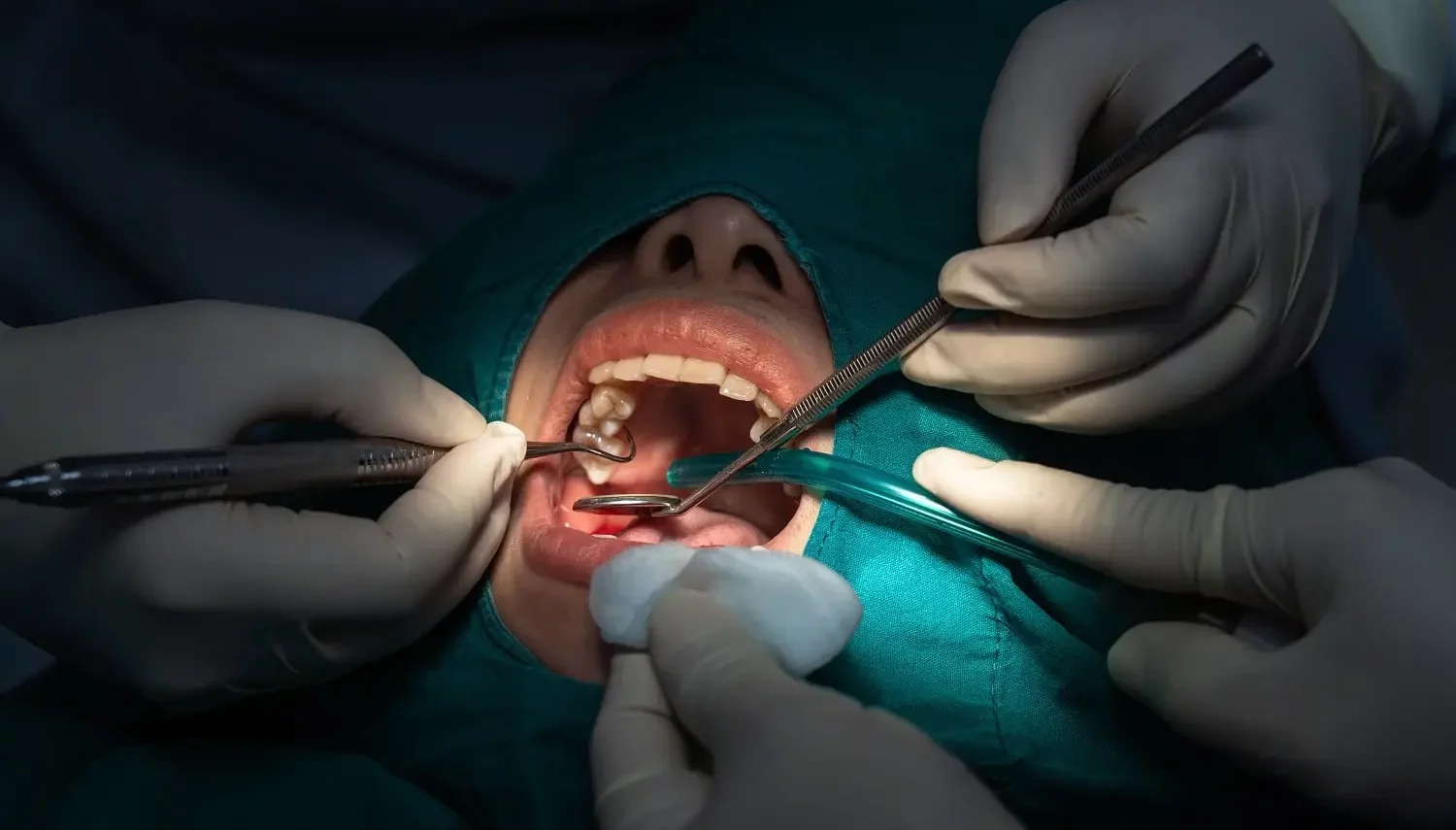Root canal infections are common throughout the world; they are the main cause of pain and the most frequent reason for dental treatment urgency. In this article, we will tell you what you need to know to assess your condition and take action to address it.
How are the Teeth Made?
Teeth are organs made up of several layers of hard tissue (enamel, dentin, and cement) that house the dental pulp. The dental pulp provides vitality to the tooth, carrying a blood supply and innervation. It transmits pain signals in the presence of any aggression, such as caries, fractures, or trauma. The pulp is located both in the crown of the tooth and the roots. Of note, each root has at least one duct or canal, where the dental pulp is housed.
What are Root Canal Infections?

The root canal is originally a sterile space; therefore, when affected by outside bacteria, it is considered infected. Root canals can become infected for various reasons:
- Caries dental: When hygiene is poor, bacteria feed on the food debris left in the mouth and produce an acid that causes holes in the teeth. If these holes reach the dental pulp, the canal becomes infected, the pulp becomes inflamed, and severe pain often occurs.
- Dental fractures: If part of the tooth structure is lost and the dental pulp is exposed, the root canal may become infected.
- Trauma: When teeth are knocked over, even when they are not fractured, they can become disconnected from their blood supply, causing necrosis of the pulp. When this tissue breaks down inside the tooth, an infection occurs.
A root canal infection centers around its potential to migrate beyond the confines of the root canal itself, reaching out to embrace the neighboring gum tissues. This connection is pivotal, representing a critical juncture where the infection’s influence extends from the hidden recesses of the tooth to the visible terrain of the gums, often resulting in various gum diseases.
What are the Signs and Symptoms of a Root Canal Infection?
If there is an infection, it could spread to the root through the root canals. If this infection is not treated in time, it could cause an abscess, that is, an inflamed area filled with pus that can affect the neighboring tissues of the tooth.
In the presence of an infection in a root canal, the following symptoms may occur:
- Mild pain is characterized as more annoying than painful.
- Intense and unbearable pain, either spontaneous or when touching the tooth.
- Pus discharge.
- Sensation of heat in the affected area.
- Sensitivity to touch or pressure.
- Grayish coloration in the tooth (but not always).
An X-ray allows us to see the degree of involvement of the dental pulp; in some cases, it will show if the infection has already spread to the bone that surrounds the tooth. To know more about the symptoms of root canal infection, you can check out this article.
What is a Root Canal?
Endodontics or root canal treatment is a procedure that consists of removing the dental pulp, leaving the canal clean, and minimizing the presence of bacteria to relieve pain caused by inflammation. Performing this treatment allows the infection to be resolved without having to remove the tooth.
How is a Root Canal Performed?
A root canal treatment is a routine procedure that, although it takes several sessions, does not entail any subsequent disability for the patient. Root canal treatment consists of several stages:
- Exam: The endodontist performs a comprehensive evaluation by the professional, where he examines both clinically and radiographically the state of the tooth, the number of roots, and whether or not there is an infection that compromises the neighboring tissues of the tooth and the root. In the case of severe infections, the professional will likely prescribe antibiotics.
- Anesthesia: Before starting the treatment, local anesthesia is applied to the tooth undergoing the procedure.
- Isolation: Before starting the procedure, the dentist inserts a rubber drape that isolates the tooth from the rest of the mouth. This insulation protects the rest of the mouth from the disinfectant to be applied to the inside of the canal. It also prevents accidents whereby small items could fall into the area and prevents the entry of more bacteria from the mouth into the canal.
- Opening: When the pain has passed, the dentist uses a bur to remove the decay and open the space where the dental pulp and infection exist.
- Pulpectomy and disinfection: When the pulp is exposed, the infected tissue is removed with the help of tiny needle-like instruments, and then the canal is washed, cleaned, and dried. In some cases, the remaining cavity is filled with medication to help heal the infection or allow the pus to drain. At the next appointment, these medications are withdrawn. Between appointments, the dentist places a temporary restoration to protect the inside of the tooth. One or more X-rays may be required during this procedure.
- Obturation or seal: Once the canal is clean and dry, its interior is sealed with cement and a material called gutta-percha, similar to rubber. These materials are biocompatible, that is, they do not generate a reaction with oral tissues. Subsequently, the tooth will need to receive a permanent restoration or crown.
If the idea of undergoing a root canal treatment doesn’t sit well with you, you can check out this article for the best alternative procedures to root canal treatment.
What to Expect After a Root Canal?
- It is possible to experience some tenderness from the administration of the anesthetic. This symptomatology is transient and does not usually last more than a couple of days. Sometimes the professional prescribes analgesics to control pain and inflammation.
- By removing the dental pulp, the tooth is left a little more fragile and susceptible to cavities and fractures, since the dental structure loses moisture and the tooth no longer feels pain, which protects it from external aggression. Note: Avoid biting things that are too hard.
- After endodontics, it is essential to permanently seal the entrance to the canals with a final restoration in resin or a dental crown. If this is not done, the exhaustive cleaning will be lost and the infection can recur. This also helps prevent fractures.
How are Root Infections Avoided?
Root infections can be prevented as follows:
- Adequate oral hygiene: brushing at least three times a day with the use of the necessary elements: toothpaste, toothbrush, dental floss, and mouthwash.
- Visit the dentist at least twice a year; professional dental cleanings address the accumulation of plaque and the development of diseases such as dental caries.

It is important to schedule control consultations with a specialist. A root canal treatment is a good option to prevent tooth loss, but if it is not controlled or the practitioner does not perform adequate cleaning, caries can occur, affecting not only the pulp of the tooth but also the neighboring tissues. This can lead to the loss of the tooth or a more serious infection that could even compromise life. Consult your dentist if you experience severe pain or swelling in the area after endodontic treatment.
Contact us
If you have any questions about root canal infection or other topics, you can contact us at Channel Islands Family Dental as well as our page on Facebook. We look forward to your visit and we will make a timely diagnosis. Our dentists in Oxnard, Santa Paula, Ventura, Newbury Park, and Port Hueneme will be able to guide you toward the best treatment to take care of your health and give you back your best smile.
Frequently Asked Questions (FAQ)
Bibliography
1. An overview of root canals. (Mar 20, 2023). WebMD. https://www.webmd.com/oral-health/root-canals
2. Root canal. (Jul 9, 2021). Cleveland Clinic. https://my.clevelandclinic.org/health/treatments/21759-root-canal
3. Root canal treatment. (s/f). Nhs.uk. https://www.nhs.uk/conditions/root-canal-treatment/
4. Root canal treatment. (Aug 10, 2017). American Association of Endodontists. https://www.aae.org/patients/root-canal-treatment/
5. Root Canals. (s/f). Mouthhealthy.org. de https://www.mouthhealthy.org/all-topics-a-z/root-canals
6. Slide show: Root canal treatment. (Dec 21, 2021). Mayo Clinic. https://www.mayoclinic.org/diseases-conditions/tooth-abscess/multimedia/root-canal/sls-20076717
7. Stang, D. (May 24, 2018). Root canal. Healthline. https://www.healthline.com/health/root-canal














